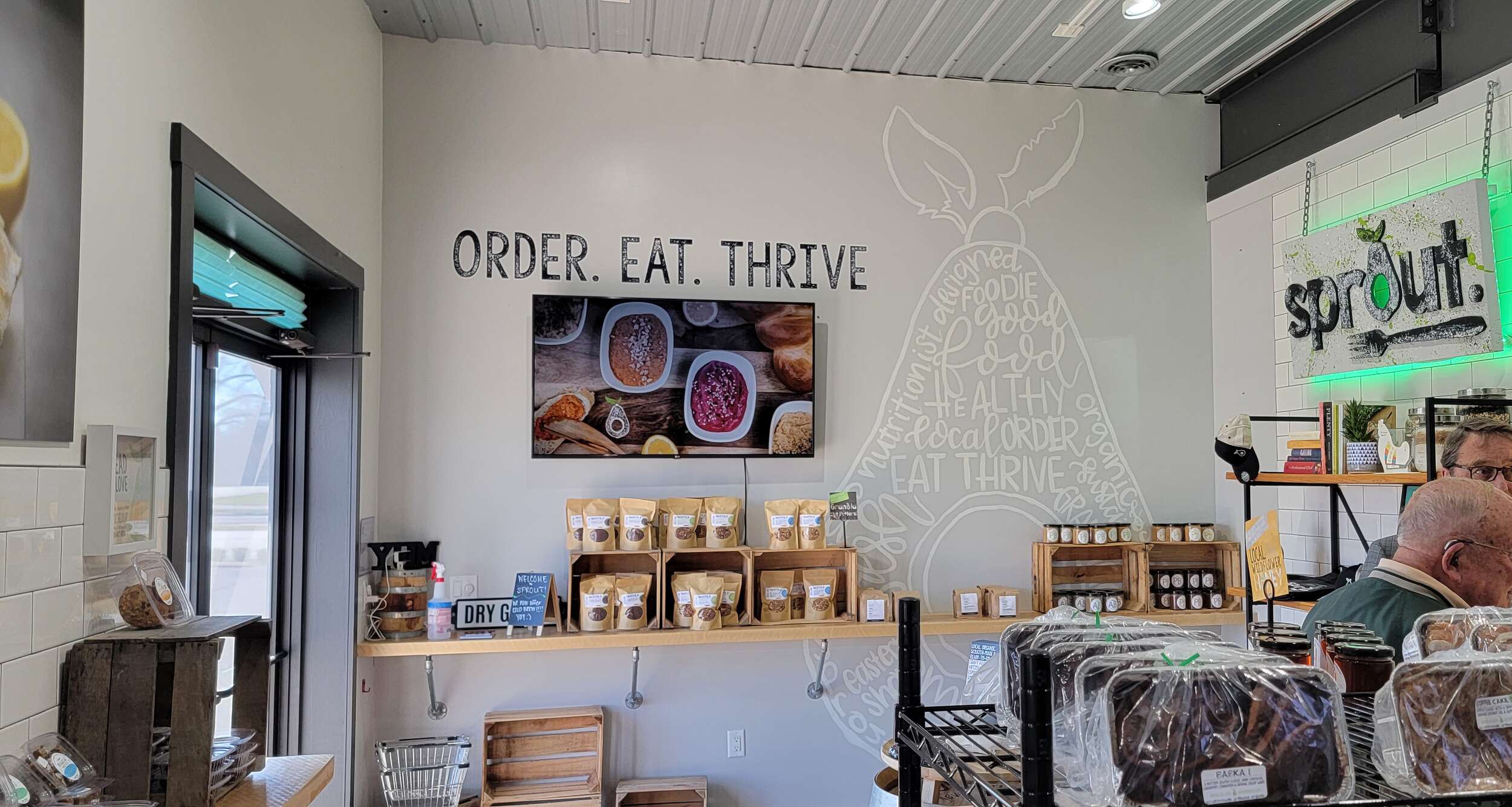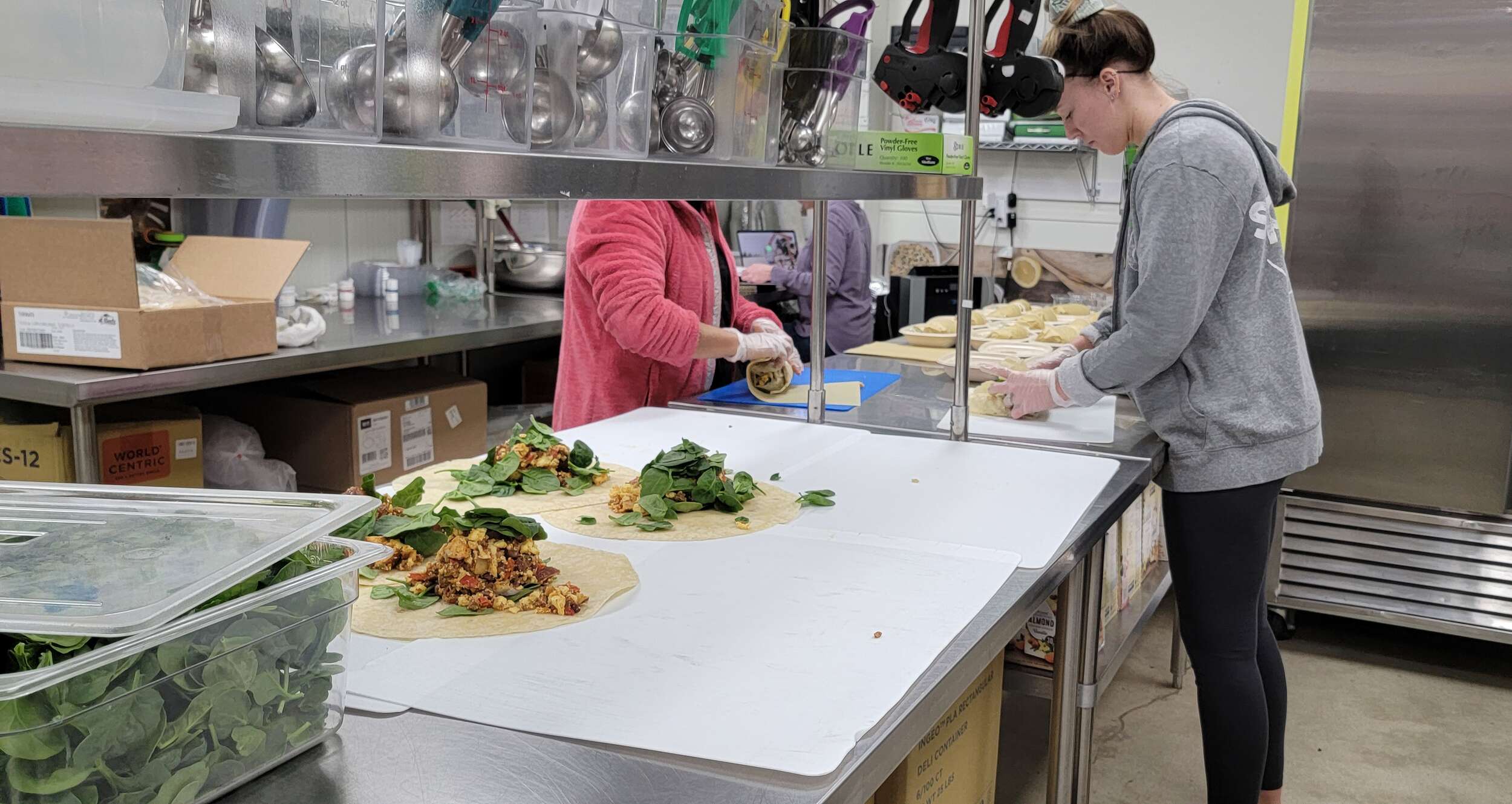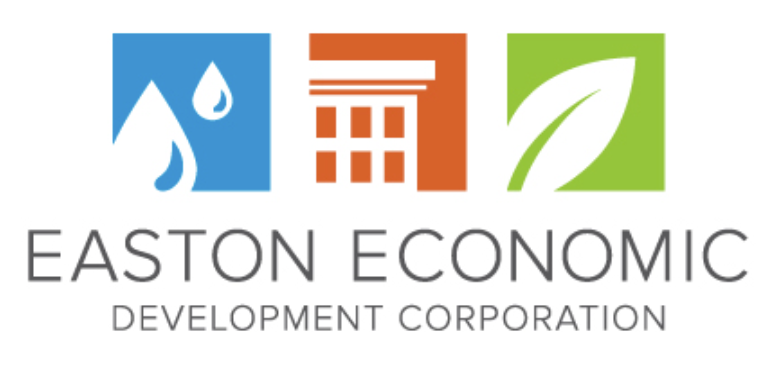Interview with Emily and Ryan Groll, owners of Eat Sprout on 335 N Aurora Street in Easton, 114 S Talbot St in St. Michaels, and soon to open in Annapolis.
EEDC: The obvious first question: how did Eat Sprout start?
Ryan Groll (Ryan): Initially unintentionally. Emily had been in the military–Air Force, and I have a master’s in nutrition and worked with clients at gyms. We fell in love with the community after moving here in 2012, when we both worked for the same employer, helping to start a business. In 2015, right after buying our house and having our first daughter, we both lost our jobs. We considered moving back over the bridge and having Emily go back to doing government work. But the whole reason we moved out here was for the lifestyle, the people, and the community. And so that’s pretty much what kept us here.
However, things got bad. We were even on food stamps. But throughout it all, the people we had gotten to know over the years were doing everything to help us. Then one of my good friends/clients, Gary Sampson, who owns Tiger Roofing in Cambridge, who knew of my background in food and nutrition and my wife’s ability to cook, came to us and said, ‘My business is growing. And I don’t have time to cook. Can you do it?’
EEDC: So you became sort of personal chefs? How did that work out?
Ryan: It was very awkward at first because we were cooking food at our house, putting it in Tupperware containers, meeting Gary at his office or in random parking lots wherever his job was. I would give him a plastic bag full of five or six meals, and he would give me back all containers from the previous delivery.
EEDC: And that became the impetus for starting your business?
Ryan: Well, no. This was just us trying to make money to pay our next mortgage while we were still looking for jobs. Then Gary said, ‘Hey, I have a friend who tried your food and really liked it. Can you cook for them?’ We decided it probably wouldn’t be that much more challenging since we were already meal planning and shopping. And so we began to cook for two people, which became three, then four, and soon we were cooking for around a dozen people. Then it became overwhelming. We were getting up at the crack of dawn, meeting farmers, going to grocery stores, researching recipes, making the food, packaging the food, and delivering it to their homes or offices with our daughter in the car seat. We’d come home, do the dishes, and start again the next day. It was like cooking a large family Thanksgiving meal every day, seven days a week.
We finally realized we had two options: we could completely squash it, get a job, and say that was a cool run. Or we could invest our time, energy, and money into this concept of food making we had developed.
EEDC: And this became Eat Sprout?
Ryan: Not yet. We didn’t have the funds to open our own place, so I looked for a commercial kitchen where we could do the cooking. When that didn’t come about, my family suggested a food truck. Of course, between the Health Department and the State and the County, we had to find out and be prepared to comply with various regulations, etc. I then found a company in Michigan that retrofits old school buses and makes them into food trucks. I went out there, designed and built one with these guys, and brought it back. We hooked it up to our well and septic, had it licensed, got it up and running, and launched Eat Sprout in 2016.
EEDC: How hard was the transition from personal chef cooking to cooking for the masses?
Ryan: We kept the same business model, creating a type of subscription based on the number of meals a day or per week, which would then be prepaid. I would get all my ingredients, process, make, package, and deliver them. That way, there was zero waste. We would do this once a week. And when we got busier, we did it twice a week, and then three times a week. Then we brought on our first employee, then our second employee. We sold Emily’s car to buy a delivery van. And then we got our first delivery driver. And it just grew and grew and grew from there.
Before long, we put a refrigerator at the Eastern Shore Land Conservancy, which became our first introduction to retail Eat Sprout. Meanwhile, we continued to cook our food in the 120 square feet food truck. At times we had up to five people in that space. It was time for a kitchen. After finding this building on Aurora Street, we went to about a dozen banks, and they all said no. Except for Shore United, who have been huge advocates of Eat Sprout, even though they didn’t like funding restaurants. ‘But we like you guys,’ they said, ‘because you’re not a restaurant!’ I told them: “You’re right. We’re logistics.’
EEDC: Is that how you would describe your business, Emily?
Emily: Yes, I would because we plan in advance both for you and us. One of our mottos is if you keep good food in your fridge, you’ll eat good food. So we have to make that happen for you.
EEDC: When did you finally open the doors to the building?

Ryan: 2018. And as soon as we opened, we got a taste of what it was like to have Sprout being a place where people can just come in, grab a meal and head out the door. It was very nerve-racking at first. I would stand at the front door, wondering who would be our first customer today? And some days, we’d have two or three people. Some days, we’d have five. And we got excited when we hit 10, then 20, and so on. After that, we opened up our second Cafe in St. Michael’s at the beginning of 2019, and then COVID hit, and we closed our doors for a few months. After we reopened, we haven’t had to look back.
EEDC: One of the questions we’re curious about is in this COVID world: how do you attract and retain the talented staff you have?
Ryan: Everybody here has a role that can’t be easily replaced. Everybody is important. Take, for instance, our cook Wes. He’s Gary’s (Sampson) son who had gone to culinary school. I told him we couldn’t pay him what he was probably making. But I could offer him a completely different lifestyle because the chefs I know work terrible hours. They work late nights, holidays, weekends, it’s hard to take time off, tickets are constantly popping in your face, and you have to cook on demand. I said that by working for us, he could make his own schedule, have paid time off as needed, as well as nights, holidays, and weekends. Plus, there are no tickets to fill since this is a production-style kitchen. As I said, we’re a logistics business more than anything else. When we needed another chef, Wes introduced us to Joaquin, and when we needed a baker, we got Chef Julia. All of our staff are incredibly talented, and it shows. So in answer to your question on how we keep our staff? By providing them with what they want.
Emily: As a side note, we are actively looking for additional staff members.

EEDC: Noted. What strengths would you say each of you brings to your business?
Emily: I can answer that. I’m more on the people logistics side, like HR, payroll, ordering products, and the behind-the-scenes stuff. Ryan is much more on the advertising end, the face of Eat Sprout. Also, my background is much more culinary, and his is more on the technical side. So when I say the chicken needs to be at 165 degrees, he’s the one who will be out finding the perfect thermometer.
EEDC: What has surprised you most on this journey?
Ryan: Everything is a surprise because this is all still very new. We enjoy that this is a way of providing a product and a service to people that we’ve created and crafted from scratch. It’s not like we’re opening up the store and selling other people’s things.
Emily: For me, it’s how supportive our community has been. We’re not in Portland, Oregon; we’re not in a very food-centric location. So, to be successful here means that our community has taken to what we’re doing and felt the need for it. And that’s just heartwarming.
EEDC: This ‘creating from scratch’ concept, where do the ideas come from?
Ryan: The people I was telling you about—the staff. All of them have contributed something– whether it’s the food, the branding, or the names of things.
Emily: Yes, our chefs have definitely taken on the roles of interpreting what our guests are looking for and making that happen. In the beginning, we came up with all the recipes. Some things are still on the menu from that run. But to be totally honest, the chefs have definitely tweaked them to make them better.
EEDC: Do you consider Eat Sprout a health-related business?
Emily: I do. Our whole intention from the ground up is to be very transparent about how we produce our products. And I think regardless of if you’re looking at health from an environmental standpoint, a nutritional standpoint, or even a political standpoint, it all matters. Everyone may think about health differently, but we can fit that, no matter what you’re looking for.
EEDC: Do you source locally?
Ryan: Yes, we start local, and if we can’t get something that’s local, then we buy organic. For example, our avocados, pineapples, and citrus come organically from other areas. But things like beef, turkey, and dairy come from local farmers that we know and trust in how they’re treating their animals and raising their crops.
EEDC: What’s next for Eat Sprout?
Ryan: Well, we’re opening up in Annapolis this spring. It will be a sit-down café with the same feel as the St. Michaels location but with the grab-and-go concept of Easton.
EEDC: Besides Annapolis, what about further expansion plans?
Ryan: I foresee something coming down the pipeline very soon. We talk about it as a hub-and-spoke model, with the hub being our central kitchen. That’s where we do all the production, the logistics, the manufacturing, the packaging, and the quality control.
Emily: We don’t know what we’re going to be when we grow up. I mean, we’re different in that we’re a cross between a market and a restaurant, and there’s not a lot of people doing that anywhere. So we’re going to go with the flow and see what happens after we open the next two shops. We have a plan. But we also realize that even the best plans don’t always pan out 100%. I mean, the centralized kitchen idea and the hub-and-spoke model have been done before, but in different scenarios. So I think for this area, meaning the Eastern Shore/Mid Shore Area and Annapolis, it will work really well for us in the near future.
Know anyone new to Easton? We’d love to hear their story! Email



